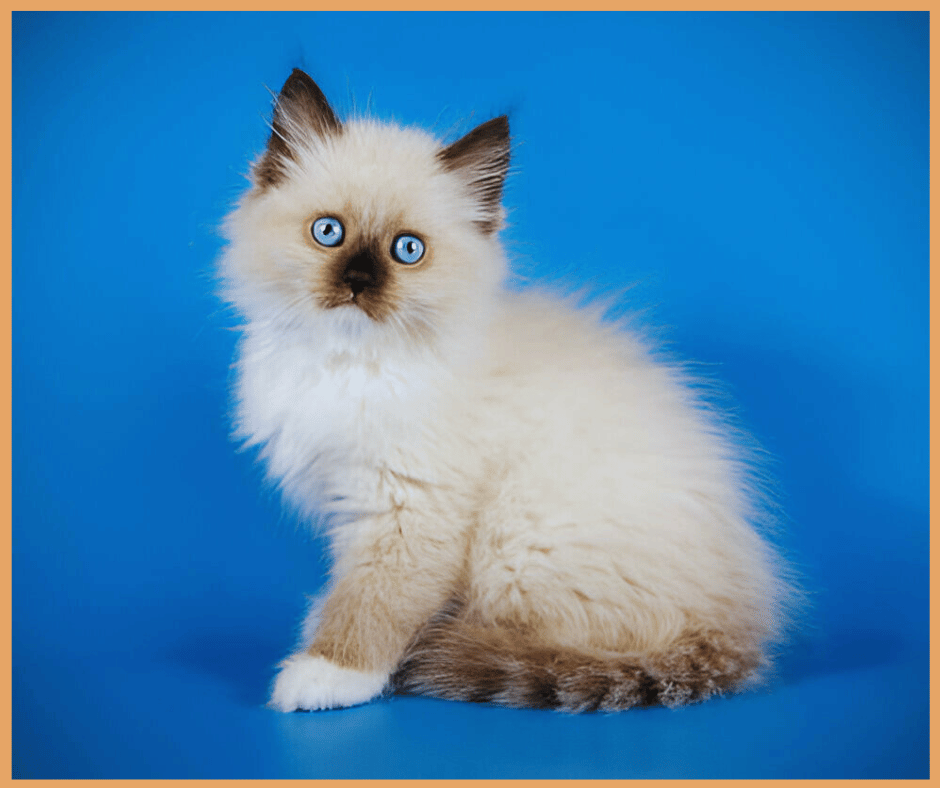Brown Ragdoll Cats are a charming and unique Cat breed admired for their striking appearance and warm personality.
People love ragdoll cats because of their rich, chocolate-colored hair and beautiful blue eyes. Ragdoll Cats are also unique because of Certain Rare color and pattern combinations, like lilac or chocolate with particular patterns, which can be harder to find.
This large cat breed has a Unique, gentle, and affectionate nature, and people Consider it an ideal companion for families and individuals.
Today’s article will cover all you need to know about Brown Ragdoll cats, including their different types, lifespan, unique behavior, and interesting facts.
We’ll also discuss essential care tips, the adoption process, and the costs of owning one of these charming felines.
If you’re considering getting a Brown Ragdoll cat or want to learn more about this breed, keep reading to learn everything you need.
Read: Dwelf Cat Breed Info: Lifespan, Care, Feeding Habits, Origin, And More
Types of Brown Ragdoll Cats
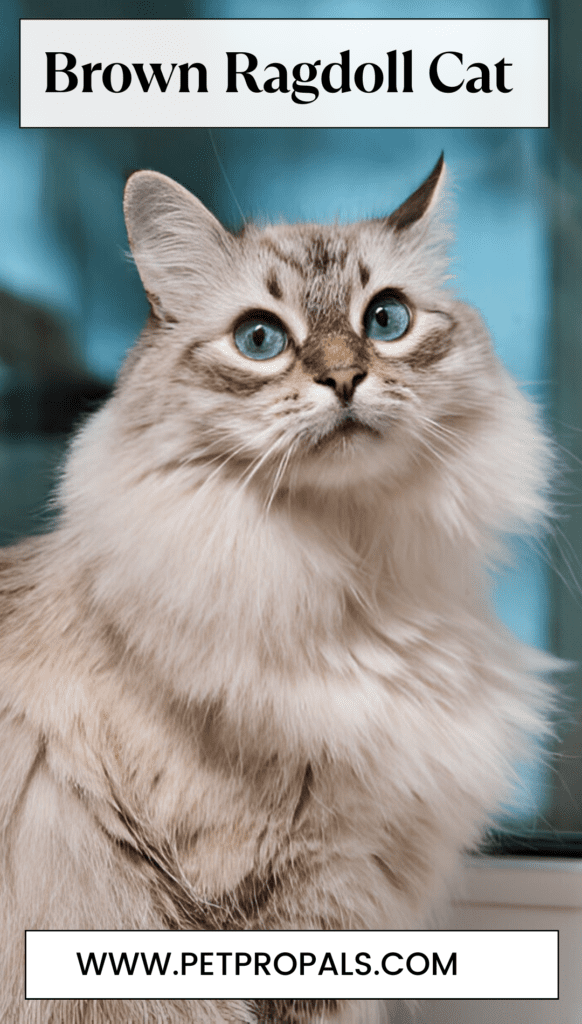
Brown Ragdoll cats display various characteristics, primarily influenced by their coat colors. Seal and chocolate are widespread variations among these felines.
Seal Variation
The seal Brown Ragdoll is characterized by its deep brown coat, which appears almost black in some lighting. Its ears, faces, paws, and tails have darker points, contrasting sharply with its rich brown fur.
This color combination gives seal ragdolls a stunning and unique look, characteristic of the breed. Seal Ragdolls are known for their elegant appearance and are popular among cat lovers.
Chocolate Variation
Conversely, chocolate Brown Ragdolls features a lighter, warm-toned brown coat. Similar to the seal variation, their darker brown points create a striking contrast against their lighter body fur.
This contrast highlights their features and adds to their overall charm. Chocolate Ragdolls are loved for their gentle and affectionate nature, making them beloved pets in many homes.
Brown Ragdoll cats, especially those with specific color variations like cinnamon, are considered rare. While seal and chocolate variations are more common, cinnamon Ragdolls are less frequently found.
Brown Ragdoll cats, especially those with specific color variations like cinnamon, are in high demand among cat enthusiasts.
Determining the exact global population of Brown Ragdoll cats is challenging due to differences in breeding methods and regional popularity.
Cinnamon Ragdolls are relatively uncommon in the Ragdoll breed, but their unique cinnamon-colored coat makes them highly desirable to collectors and breeders.
Physical Characteristics
Ragdoll cats are famous for their beautiful physical attributes, which include a wide range of coat colors and patterns, mesmerizing eye colors, and a distinctively prominent body structure.
Coat Colors and Patterns
Ragdoll cats display various coat colors and patterns, contributing to their unique and eye-catching appearance.
Ragdolls come in 7 Colors:
- Seal
- Chocolate
- Blue
- Lilac
- Cream
- Red (Flame)
- Tortie
Seal: Dark brown points (ears, face, paws, tail) on a lighter brown body.
Chocolate: Lighter brown points on a warmer-toned brown body.
Blue: Bluish-gray points on a lighter, bluish-gray body.
Lilac: Lighter grayish points on a lighter, frosty gray body.
Cream: Creamy points on a lighter, cream-colored body.
Red (Flame): Reddish-orange points on a lighter, cream-colored body.
Tortie: A combination of two colors, usually black and red or cream.
Patterns:
Colorpoint: Darker points with a lighter body.
Mitted: Similar to colorpoint but with white “mittens” on the front paws, white chin, chest, and belly.
Bicolor: Darker points with a white inverted “””” on the ce, white legs, belly, and chest.
Must Read: 10 Stunning Cats With Large Ears With Picture
Eye Color and Body Structure
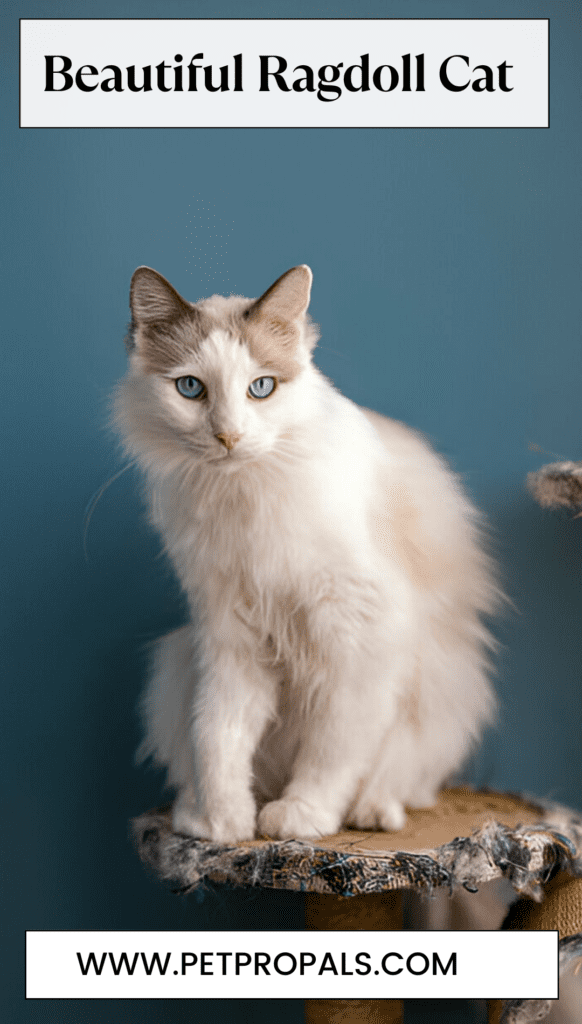
Ragdolls are known for their striking blue eyes, which are typically large, oval-shaped, and expressive.
The intensity of blue eye color can vary depending on the coat color and pattern.
Ragdolls have semi-long, muscular bodies with sturdy frames. They are large cats with a broad chest and strong legs, giving them a robust appearance.
Despite their size, Ragdolls are known for their gentle and docile temperament.
Ragdoll breed involves summarizing typical ranges for their size and weight. Here is an essential guide based on general standards:
| Measurement | Range |
|---|---|
| Weight | 10 – 20 pounds (4.5 – 9 kg) |
| Length | 17 – 21 inches (43 – 53 cm) |
| Height (at withers) | 9 – 11 inches (23 – 28 cm) |
| Body Structure | Large, muscular |
| Coat Length | Semi-long |
| Eye Color | Blue |
| Life Expectancy | 12 – 15 years |
Description of Measurements:
- Weight: Ragdolls are large, with males typically weighing between 15 and 20 pounds (6.8 and 9 kg) and females generally weighing between 10 and 15 pounds (4.5 and 6.8 kg).
- Length: Ragdolls are medium to large-sized cats, with their bodies typically ranging from 17 to 21 inches (43 to 53 cm) in length.
- Height (at withers): They have a height of approximately 9 to 11 inches (23 to 28 cm) at the withers, the highest point of the shoulder blades.
- Body Structure: Ragdolls have a muscular build, a broad chest, and strong legs, contributing to their weight and size.
- Coat Length: Their coat is semi-long, shorter than a Persian’s but longer than a shorthaired cat’s, and has a plush and soft texture.
- Eye Color: One of the most distinctive features of Ragdolls is their deep blue eyes, which are typically large, oval-shaped, and expressive.
Brown Ragdoll Cats Common Health Issues
Caring for a Ragdoll cat requires regular grooming to prevent matting and maintain a healthy coat. A balanced and nutritious diet is essential to support their overall health and well-being.
Regular veterinary check-ups are crucial to monitoring their health and catching potential issues early. Like all breeds, Ragdolls can be prone to certain health conditions needing special attention and care.
Common Health Issues
Hypertrophic Cardiomyopathy (HCM) is a common heart condition in Ragdolls and other cat breeds. Regular cardiac screenings are recommended.
Feline Lower Urinary Tract Disease (FLUTD): Ragdolls often have bladder and urinary tract problems. To help prevent these issues, ensure they have plenty of water and a balanced diet.
Obesity: Ragdolls are not very active, so they can gain weight if their diet is not managed correctly due to their gentle nature.
Dental Problems: Ragdolls may develop dental issues like gingivitis or periodontal disease if dental care is neglected.
Brown Ragdoll Cats Lifespan
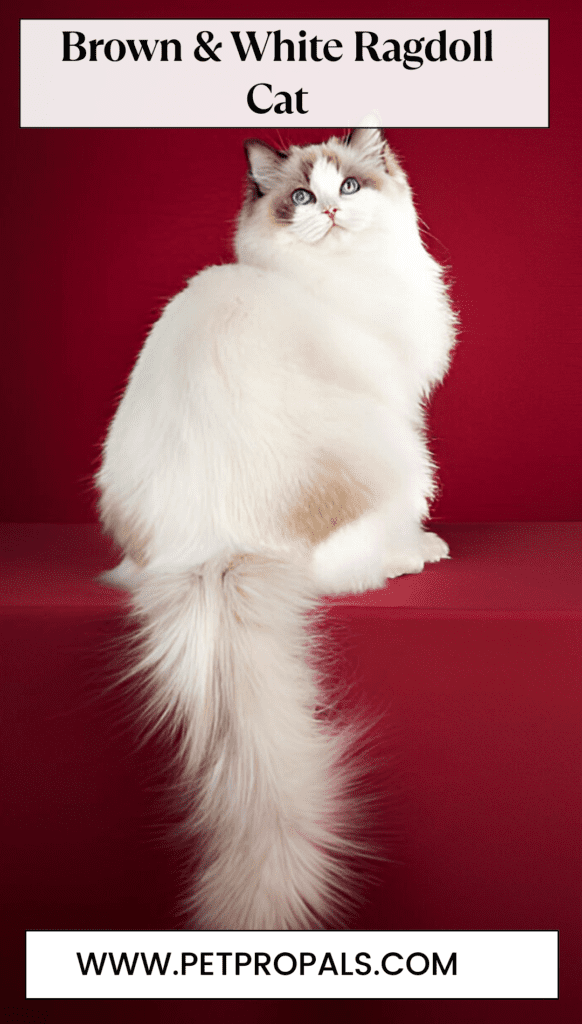
Ragdoll cats typically have an average lifespan of around 12 to 15 years. With proper care and a healthy lifestyle, Ragdolls are incredible creatures that can live well into their late teens or even early twenties!
Causes of Ragdoll Death
Ragdolls can die for various reasons, including:
- Old Age: Like all living beings, Ragdolls eventually succumb to old age-related decline.
- Health Issues: Serious health conditions like heart disease or kidney failure can lead to death.
- Accidents or Trauma: Outdoor Ragdolls may face risks such as accidents or injuries that could lead to fatal consequences.
Susceptibility to Illness
Ragdolls are generally healthy cats but may be more susceptible to specific health issues, such as HCM and urinary problems, than other breeds.
Regular veterinary maintenance, a balanced diet, and a stress-free environment can help prevent illness and ensure a long and happy life for your Ragdoll companion.
Behavior and Temperament
Ragdoll cats are gentle and loving. They are calm and friendly and make great pets for families and people. Ragdolls like being around people and are easygoing.
Personality Traits
The personality traits of Ragdoll cats include being docile, loving, and trusting. They are often described as ”puppy-like because they follow their owners around and seek human companionship. Ragdolls are not typically vocal but may communicate with soft chirps or purrs, especially when seeking attention or affection.
Interaction with Families and Other Pets
Ragdolls are known for their affinity for families and can form strong bonds with their owners. Due to their friendly and tolerant nature, they generally get along well with children and pets, including dogs. They enjoy being part of household activities and often lounging near their family members.
Why Are Ragdoll Cats So Special?
Ragdoll cats are known for their beautiful looks and gentle nature. They have soft fur, beautiful blue eyes, and a calm personality, making them popular with cat lovers. One of their unique behaviors is going limp when you pick them up, which adds to their charm.
Do Ragdolls Like to Be Held?
Yes, Ragdolls usually love being held and cuddled. They often relax entirely in their owners’ arms, calledagdolling.” This behavior shows their trusting nature and strong bond with their human companions.
Do Ragdolls Like to Be Bathed?
Although Ragdolls generally cooperate with grooming, including occasional baths, they often dislike water. Yet, with positive reinforcement and gentle handling from an early age, many Ragdolls can gradually grow accustomed to baths as part of their grooming routine.
Do Ragdolls Like Belly Rubs?
Some Ragdolls enjoy belly rubs, especially when they feel comfortable and trust their owners. However, like many cats, their preference for belly rubs can vary from one cat to another. Observing their body language is essential to ensure they are receptive to belly rubs.
Do Ragdolls Sleep with You?
Ragdolls often enjoy sleeping close to their owners and may even choose to sleep in the same bed. They are affectionate cats that appreciate companionship, making them likely to seek out cozy spots near their loved ones for sleeping.
Why Do Ragdolls Flop?
The behavior of ‘flopping’ or going limp when picked up is characteristic of Ragdolls. This relaxed posture reflects their trusting and submissive nature, signaling comfort and security in their owner’s presence.
What Does It Mean When a Ragdoll Cat Licks You?
When a Ragdoll cat licks you, it’s often a sign of affection and trust. Cats lick to groom themselves and to show affection to their owners, marking you as part of their social group.
Can Ragdolls Be Vicious?
Ragdolls are known for their gentle temperament and are not typically aggressive or vicious. They are more likely to retreat than engage in confrontations when faced with stress or discomfort. Proper socialization and positive reinforcement play a crucial role in shaping their behavior.
Do Ragdolls Like Car Rides?
Ragdolls may tolerate car rides if introduced to them gradually and positively. While some may enjoy the adventure, others may feel anxious or stressed during travel. Providing a comfortable carrier, familiar items, and reassurance can help Ragdolls feel more secure during car rides.
Caring for Brown Ragdoll Cats
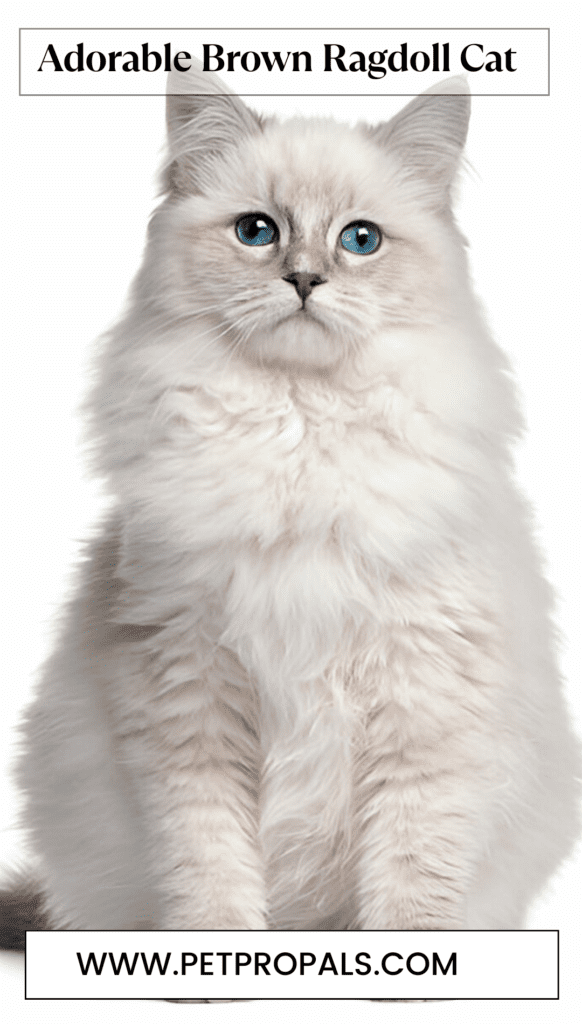
Caring for Brown Ragdoll cats involves feeding them a balanced diet, regular grooming, veterinary check-ups, creating a safe and stimulating indoor environment, socializing with them, and monitoring their weight, dental health, and overall comfort. Here, we Discussing them in detail for a better Understanding:
Diet and Nutrition
Remember to feed your cat a well-balanced diet high in protein and low in fillers. Choose cat food designed for their age (kitten, adult, senior) and specific health needs.
Keep an eye on their food intake to control Eating, as Ragdolls can be prone to gaining weight. Make sure they always have access to clean, fresh water.
Grooming
Regularly brush your Ragdoll’s semi-long fur to prevent matting and reduce shedding. Aim to brush them at least once a week and increase them to several times a week during shedding seasons.
Regularly trim your cat’s nails to avoid discomfort from them growing too long. Use a veterinarian-recommended ear cleaner to gently clean your Ragdoll’s ears and remove dirt and wax buildup.
Veterinary Care
Schedule regular veterinary visits for vaccinations, check-ups, and preventive care. Follow your vet’s advice for flea, tick, and worm treatments. Monitor changes in behavior, appetite, or litter box habits, as these could indicate underlying health issues.
Environment
Keep Ragdolls indoors to keep them safe. Provide toys, scratching posts, and interactive play for mental and physical stimulation. Ensure cozy, relaxing spots with cat trees, beds, and quiet corners.
Socialization and Interaction
Spend quality time with your Ragdoll; they enjoy human companionship and thrive on affection.
Engage them in interactive play to satisfy their hunting instincts and bond with them.
Health and Wellness
Brushing teeth regularly prevents dental issues like gum disease. Monitoring one’s weight is also essential to maintain a healthy body.
Special Considerations
Ragdolls may be sensitive to extreme temperatures. Ensure they have a comfortable environment, especially during hot or cold weather.
Training and Discipline
Training and disciplining a Ragdoll cat requires a balanced approach, focusing on positive reinforcement and understanding their behaviors.
When potty training a Ragdoll, it’s essential to provide a clean, accessible litter box in a quiet area and reward them with treats and praise for using it correctly.
Patience is vital, as accidents may occur during the learning process. Discipline should emphasize redirection rather than punishment, using a firm voice and positive reinforcement to guide them toward desired behaviors.
Understanding why a Ragdoll might bite involves considering factors like playfulness, overstimulation, or communication of discomfort.
Responding calmly and providing appropriate outlets for their energy helps foster a positive relationship and encourages good behavior over time.
Seeking guidance from a veterinarian or behaviorist can offer additional strategies for effectively training and addressing behavioral issues in Ragdoll cats.
Social Relations and Companionship
Ragdolls are known for their affectionate and gentle nature, making them excellent companions for humans.
While they can thrive as single pets with ample human interaction, many Ragdolls enjoy the company of another cat for companionship, especially if they are left alone for extended periods.
A new cat should be introduced gradually to ensure compatibility and minimize stress.
Compatibility with Dogs
Due to their friendly and tolerant demeanor, Ragdolls can generally get along well with calm and respectful dogs.
Proper introductions and supervision are crucial to fostering a positive relationship between a Ragdoll and a dog.
Supervised interactions and gradual introductions help ensure both pets feel safe and comfortable.
Indoor Living Considerations
It is not considered cruel to keep Ragdoll cats indoors, as this helps protect them from various outdoor dangers, such as traffic accidents, predators, and disease exposure.
Ragdolls, known for their trusting nature, may approach strangers or animals without caution, making them vulnerable outdoors.
To keep your cat mentally engaged, provide a stimulating indoor environment with plenty of enrichment, such as toys, scratching posts, and interactive play.
This will help satisfy their instincts and keep them mentally stimulated.
Behavior and Preferences
Like many cats, ragdolls may scratch furniture to mark territory or maintain their claws.
Providing appropriate scratching posts and regularly trimming their nails can help redirect this behavior.
While some Ragdolls may enjoy water play, individual preferences vary, and it’s essential to introduce water activities gradually and positively to gauge their interest.
Favorite Toys and Affection
Ragdolls love interactive toys that engage their hunting instincts, such as feather wands and puzzle toys.
They also enjoy receiving affection from their owners, including gentle petting and cuddling sessions.
Creating a nurturing environment with comfortable spots for relaxation and observation helps fulfill their need for security and companionship.
Adoption and Cost of Ragdoll Cats
Ragdoll cats are renowned for their gentle, affectionate nature and striking appearance. Nevertheless, their ownership entails specific considerations and expenses.
Let’s consider what you must consider when contemplating adopting a Ragdoll cat.
Why Are Ragdolls So Expensive?
Ragdolls are often priced higher than other cat breeds due to several factors.
Their desirable traits, including friendly personalities, beautiful coat patterns, and distinctive blue eyes, contribute to their popularity among cat lovers.
Reputable breeders invest in quality breeding practices, health testing, and socialization, which can increase the cost of acquiring a Ragdoll cat.
Finding and Adopting Brown Ragdoll Cats
Finding a brown Ragdoll cat for adoption can be achieved through various avenues.
Local animal shelters, rescue organizations specializing in Ragdolls, and online adoption platforms like Petfinder often have Ragdoll cats available for adoption.
It is essential to research and visit shelters or contact rescue organizations to inquire about available cats and their adoption process.
Reputable Breeders and Adoption Tips
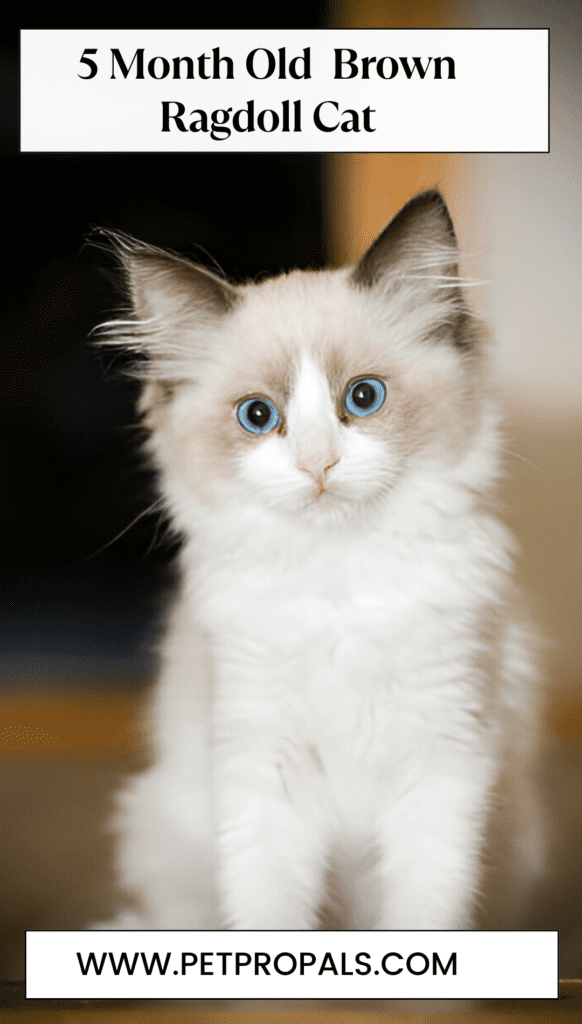
When choosing to adopt or purchase a Ragdoll cat from a breeder, it’s crucial to prioritize reputable sources.
Look for breeders who prioritize the health and well-being of their cats, conduct genetic testing, and provide proper socialization.
Visiting the breeder’s facilities, asking for references, and checking for registration with recognized cat associations can help ensure a responsible adoption or purchase.
Is It Better to Get a Female or Male Ragdoll?
Adopting a male or female Ragdoll cat often depends on individual preferences and household dynamics.
Ragdolls are known for their gentle and affectionate temperaments, regardless of gender.
Some owners may perceive slight differences in behavior or size between males and females.
Still, both genders generally make loving and loyal companions.
Source
For more information on Ragdoll adoption and breed specifics, reputable sources like The International Cat Association (TICA) and The Cat Fanciers’ Association (CFA) provide guidelines and resources for potential adopters and owners.
These organizations offer valuable insights into breed standards, responsible breeding practices, and adoption processes for Ragdoll cats.
Common Questions and Myths
Ragdoll cats, celebrated for their gentle temperament and stunning appearance, often raise questions and misconceptions. Here are responses to some common inquiries and myths:
Are Ragdolls Not Smart?
Contrary to the myth that Ragdolls are not smart, these cats are intelligent, capable of learning tricks, and responsive to training. They are known for their affectionate nature and ability to form strong bonds with their owners.
Do All Ragdolls Have Blue Eyes?
While Ragdolls are renowned for deep blue eyes, not all possess this color. Depending on their genetics and coat color, some may have blue-green or even gold eyes.
What Cat Looks Like a Ragdoll but Isn’t?
Several cat breeds share similarities with Ragdolls but are distinct breeds in their own right. Some examples include Birman cats, which also have blue eyes and a semi-long coat but lack the Ragdoll’s characteristic pointed color pattern and temperament.
How to Tell If Your Cat Is a Ragdoll?
To determine if a cat is a Ragdoll, consider these key characteristics:
- Physical Appearance: Ragdolls have a semi-long fur coat with a pointed color pattern, usually darker on the ears, face, paws, and tail.
- Temperament: Ragdolls are known for their gentle and laid-back temperament. They often go limp when held (hence the name “Ragdoll”).
- Eye Color: Most Ragdolls have blue eyes, though some may have blue-green or gold eyes.
Conclusion
This guide covers all aspects of Brown Ragdoll cats, including their different types, physical traits, coat colors, patterns, and eye colors.
We’ve delved into their health considerations, lifespan, and joint health issues, shedding light on their susceptibility to illnesses and causes of mortality.
Understanding their gentle temperament and unique behaviors, such as their affinity for human companionship and quirky habits like flopping, has highlighted why Ragdolls are cherished as exceptional pets.
We’ve covered essential care tips, including grooming, nutrition, and socialization needs, ensuring these beautiful cats thrive in their homes.
Whether considering adoption, learning about their intelligence and myths, or exploring their preferences for play and affection, this article has provided a comprehensive resource for anyone captivated by the charm of Brown Ragdoll cats.

